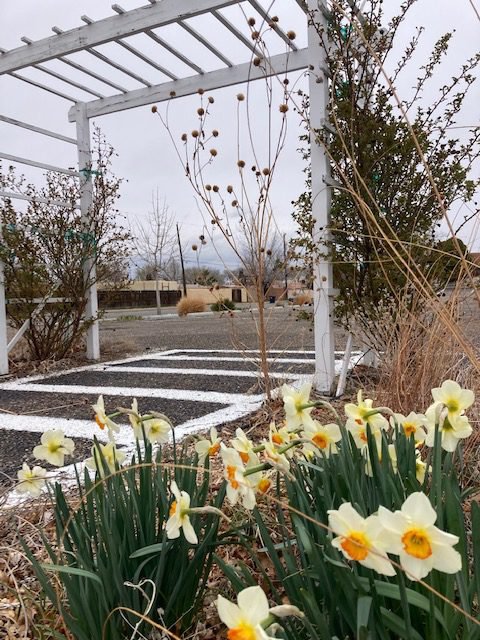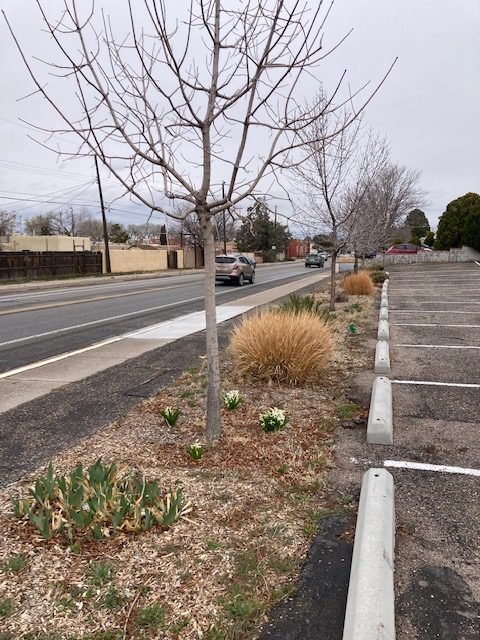40: Tending Trees in a Changing Climate
USA
A Climate Pollinator story by Sierra Ross Richer
Ten years ago, the property of Albuquerque Mennonite church in New Mexico, USA, had one tree, no shrubs and four city-lots worth of asphalt.
Today, there are 21 trees and seven distinct garden sections planted with a variety of grasses, flowers, herbs, shrubs and native vegetation.
The transformation started in 2015, when the church’s Faith in Action group sponsored seven individuals from the congregation to attend a continuing education course in landscaping at the University of New Mexico.
Sue Brown was one of the participants in the class. The first step, she said, was: “We dug up a lot of parking lot.”
The church removed about 25 tons of concrete as well as asphalt, and Sue and the others in the class began planting. Ash, locus, Chinese pistache and Texas red oak trees went in along the sidewalk, with other trees planted in a strip inside the parking lot and shrubs added behind the church building.
Today, the trees provide shade and habitat for insects and critters. Using a calculation based on the circumference of the tree trunks, Sue estimated that the 21 trees have sequestered 58,000 pounds of carbon in their trunks, limbs and roots.
But Sue worries the trees won’t survive as the changes in climate over the next few decades.
“We chose the traditional landscape, roadscape trees that are most frequently used in Albuquerque,” Sue said. “In retrospect we probably should have chosen trees that are more climate-appropriate.”
Located in the high desert of Northern New Mexico, Albuquerque’s environment will likely become hotter and dryer in the coming years. A report published a couple of years ago by the New Mexico Nature Conservancy predicts that many of the city’s trees won’t survive the changes. It recommends a list of new trees from different regions of the world that are more resistant to drought and heat.
The report was published years after the trees at Albuquerque Mennonite were already planted, but Sue plans to use the recommendations from the list to replace the current trees as they die out.
In the meantime, Sue and a group of committed individuals continue to maintain the gardens, trimming the trees and tending to the flowers, grasses and shrubs.
Upcoming projects include converting an herb garden to a wild space for pollinators and wildlife and building a second brush pile for the roadrunner birds that live on the property.
“We have renters, “Sue said, “and we have a hundred people with a hundred different opinions on what we should do, so it’s an ongoing project.”
“Native species aren’t necessarily going to survive here in the upper Chihuahua desert as it warms,” Sue said. It will take an ongoing relationship with the land to help it through the changes that are coming.
Photos



